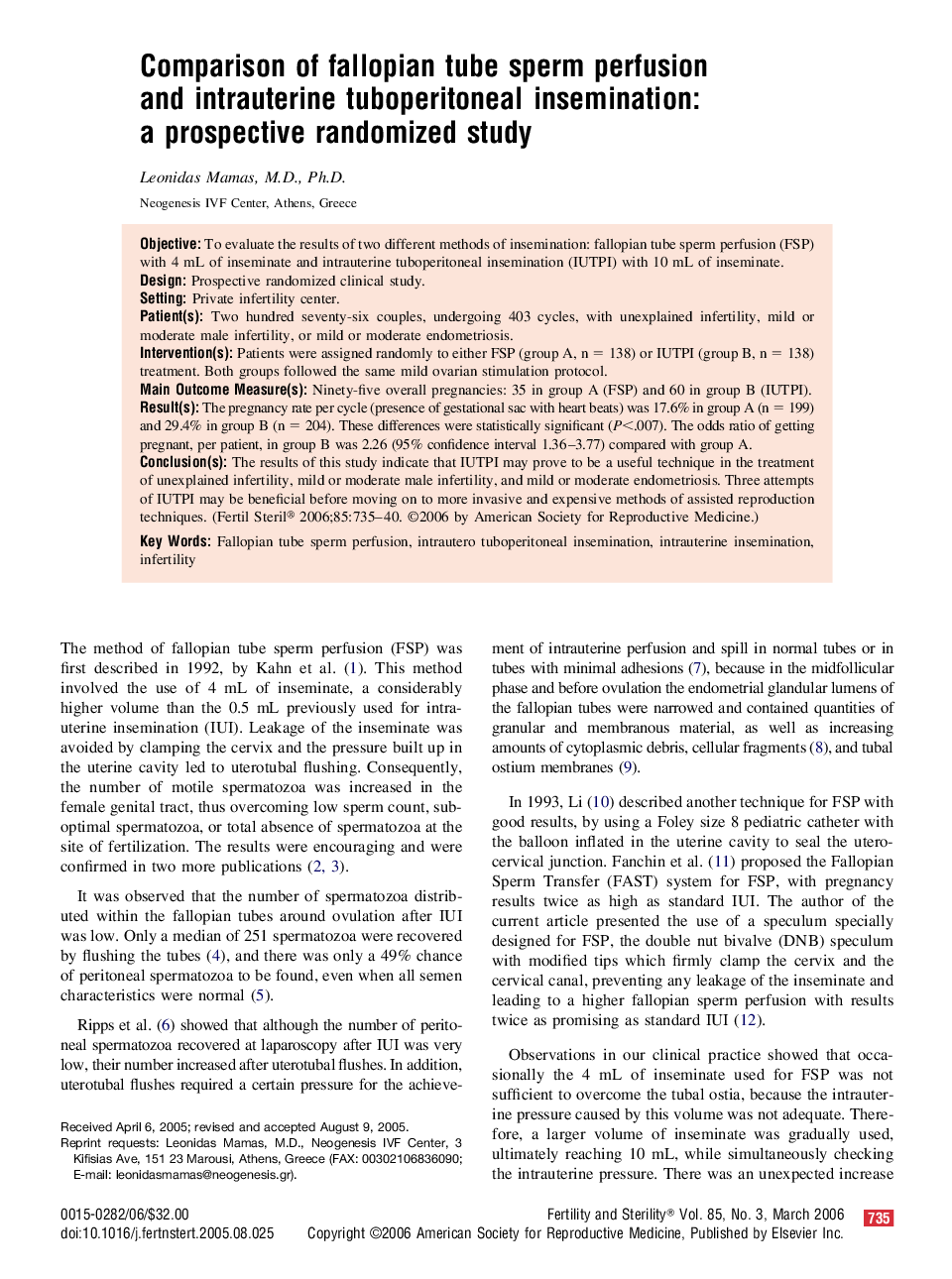| Article ID | Journal | Published Year | Pages | File Type |
|---|---|---|---|---|
| 3940733 | Fertility and Sterility | 2006 | 6 Pages |
ObjectiveTo evaluate the results of two different methods of insemination: fallopian tube sperm perfusion (FSP) with 4 mL of inseminate and intrauterine tuboperitoneal insemination (IUTPI) with 10 mL of inseminate.DesignProspective randomized clinical study.SettingPrivate infertility center.Patient(s)Two hundred seventy-six couples, undergoing 403 cycles, with unexplained infertility, mild or moderate male infertility, or mild or moderate endometriosis.Intervention(s)Patients were assigned randomly to either FSP (group A, n = 138) or IUTPI (group B, n = 138) treatment. Both groups followed the same mild ovarian stimulation protocol.Main Outcome Measure(s)Ninety-five overall pregnancies: 35 in group A (FSP) and 60 in group B (IUTPI).Result(s)The pregnancy rate per cycle (presence of gestational sac with heart beats) was 17.6% in group A (n = 199) and 29.4% in group B (n = 204). These differences were statistically significant (P<.007). The odds ratio of getting pregnant, per patient, in group B was 2.26 (95% confidence interval 1.36–3.77) compared with group A.Conclusion(s)The results of this study indicate that IUTPI may prove to be a useful technique in the treatment of unexplained infertility, mild or moderate male infertility, and mild or moderate endometriosis. Three attempts of IUTPI may be beneficial before moving on to more invasive and expensive methods of assisted reproduction techniques.
